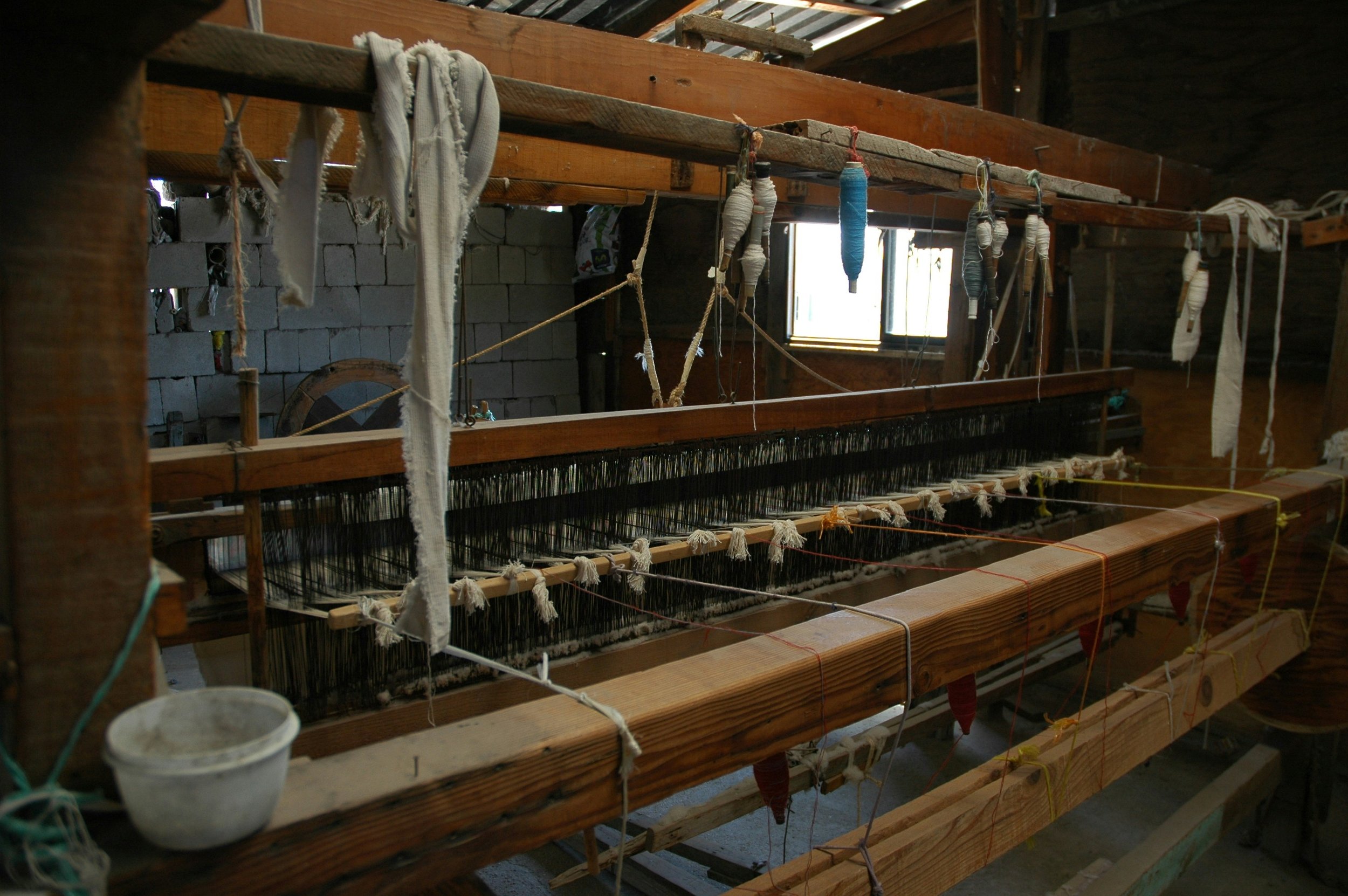Weaving Techniques 101
Hand-Knotted
Hand-knotting found its way into Indian heritage from Persia, giving it its name, Persian Hand-knotting. It’s uniqueness in art is through its style of printing; knot by knot and line by line, paying attention to each intricate detail. It’s a process taking a minimum of 2 months, ranging up to almost a year depending on the quality and size of carpet being woven.
Differentiating each knot was originally done by memory, where weavers would sing out the colors of the line of knots called Boli weaving. This later evolved to the use of design maps, which helped accommodate a rapidly changing design palate. Artisans place the design map at the base of the loom and use each pixel in a chart as a reference to a knot.
Individual, often uneven knots are visible on the back of these rugs, mirroring the pattern visible on the front. A more intricate design will have a higher density of knots at the back, the quality is measured in KPSI (Knots per square inch).
-
Pile Height
Low to Medium. Comfortable to walk on.
-
Durability
Product life of 30+ years. High design intricacy.
-
Technique
Yarn is knotted on warp thread. Extremely intricate, durable and valuable.
-

Ideal Space
Any high traffic areas for example, the living room.
-

Pros
Great durability, minimal shedding and a prestige to own, world-over.
-

Cons
Only downside is that it’s a little heavy on the pocket.
Hand-Tufted
A hand-tufted rug is made partially by hand and by a mechanized tool - the tufting gun. The process for creating a hand-tufted differs greatly from a hand-knotted rug. It starts with the design being drawn or transferred onto canvas which has been stretched over a frame. The design is made by punching strands of wool into the canvas with the tufting gun. This process is not very time-intensive and does not require the same level of skill that hand-knotting does.
After piling with strands of yarn, the rug is removed from the frame. Since there is only tension holding the pile in place, a backing must be adhered to hold the rug together. Latex (glue) is lathered onto the back and then a backing, typically consisting of a netting material followed by a jute or a canvas-like material, is applied on top of the glue. To complete the rug, a fringe is added by either sewing or gluing it on.
-
Pile Height
Medium to HIgh. Plush feel underfoot.
-
Durability
If you maintain a hand-tufted rug well, it can last for at least 10 years, and potentially up to 20 years.
-
Technique
A tufting gun, controlled by the crafter's hand), shoots the lines of yarn through fabric in loops. The loops are then cut to form the pile.
-

Ideal Space
Bedrooms and Low-Traffic Areas.
-

Pros
Mid-range pricing. Fast manufacturing time.
-

Cons
Can only be cleaned from the front. Latex backing may deteriorate over time.
Hand-Loom
Very similar to handloom textile, a carpet is woven on a loom. The loom holds the warp (the vertical threads) in place and allows the interweaving of the weft (horizontal threads). A shuttle is moved across with a pedal to interlock each line.
This method is easiest for monotone rugs and gives a printed finish to the carpet. If the carpet has to be designed with multiple colors, the color of yarn needs to be changed at the right place to help create the final design. Handloom rugs are crafted with a loop pile and is then cut to make a cut pile. Intermixing loop and cut pile gives a unique color effect to the rugs, especially for bamboo silk, as the shine of the color is different along the length of the yarn as compared to the tip. These rugs are crafted in 2 months and can last for 10-12 years.
Hand-loomed rugs usually have a low to medium pile (other than shags, which have a deep pile) and have a canvas backing added to them. They can also be denoted by the use of solid colors and see a line by line effect to the rug.
-
Pile Height
Low to Medium. Comfortable to walk on.
-
Durability
Product life of 10-12 years. Most rugs are solid but creatively designed to create tonal effects.
-
Technique
Weavers use a loom to create these rugs by interweaving of the weft threads.
-

Ideal Space
Any room that can be uplifted by the use of solid colors.
-

Pros
Different types of looms can craft versatile rugs; like felted textures, shag, naturals or solid and border rugs.
-

Cons
Intricate designs aren’t made in this style and the rugs come in solid colors. The colors can be gradated at the most.
Flat-Weave
In essence, a flatweave is a thick cloth made of cotton or wool. A Dhurrie is a flatweave from India, while a Kilim is from Persia. These rugs are woven by interlocking warp and weft threads, similar to making textile. They are mobile, versatile, durable and cost-friendly which gave way to a large range of weaving patterns, designs and colors.
The rug has no pile and is only a display of the interlocking, and creative methods can be used to give a patterned look to the rug. This is either done by using different sizes of threads, changing the colors of threads or using unique styles of interlocking. It is not made on a loom, and is extremely flexible and versatile, used both indoor and outdoor and is even an easy travel partner. Flat weaves take 2 months to craft, and comfortably last for over 10 years.
With their woven construction, these rugs are flat, don’t have a pile and are predominantly reversible.
-
Pile Height
Flat, no pile.
-
Durability
Product life of 10+ years. Wide range of designs that are moderately intricate but can also have more creative variants.
-
Technique
These are made by warp and weft threads on a loom.
-

Ideal Space
Can be used Indoors or Outdoors
-

Pros
Common fibers in flatweaves include wool, jute, and cotton. Great durability and toughness. A nearly unlimited variety of patterns and colors.
-

Cons
Slippery on floor as it is very thin so need to use rug pad, No pile so it feels coarse on the feet.



